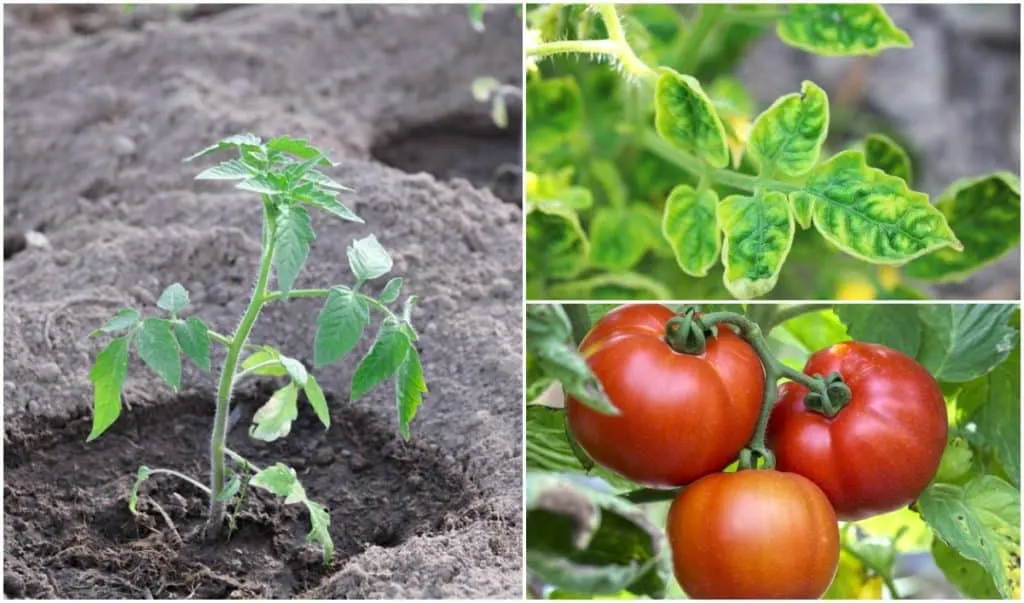
The gardening world is full of old wives’ tales and suspicious suggestions for magical remedies to cure any garden ailment.
Sorting facts from fiction is a daunting task when there’s so much conflicting information. Nowhere is this truer than in the case of Epsom salt and tomato plants.
Epsom salt is the common name for the chemical compound magnesium sulfate.
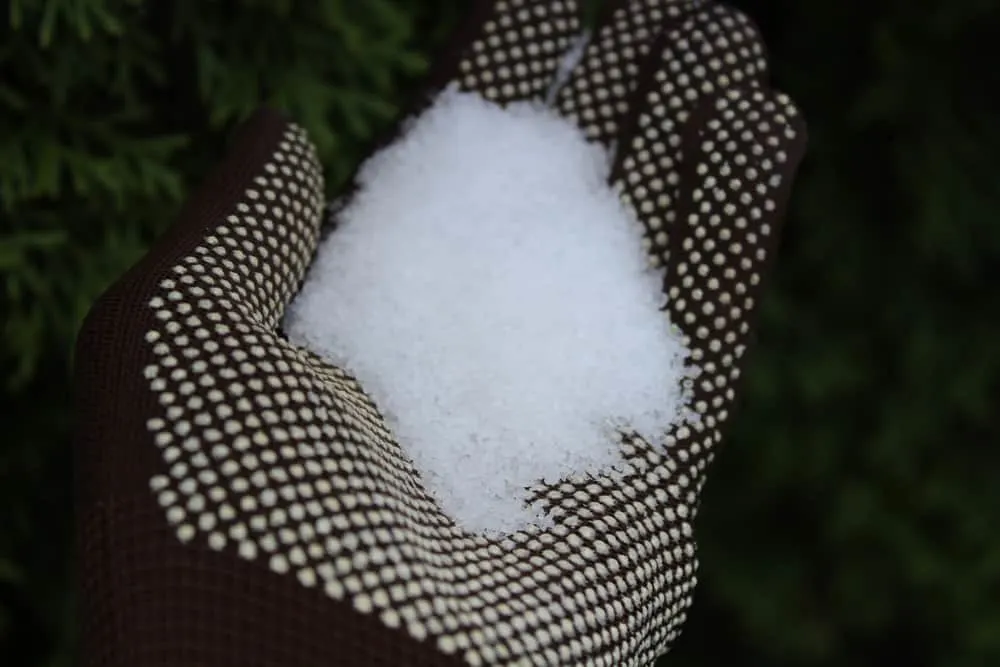
It is widely recommended by gardeners for a range of gardening problems, from weak growth to pest control. This advice is often applied to tomato plants in particular, as they are known as magnesium-hungry plants.
But, does Epsom salt deliver on these many promises? Or does it do more harm than good?
What Epsom Salt Can Do For Tomato Plants
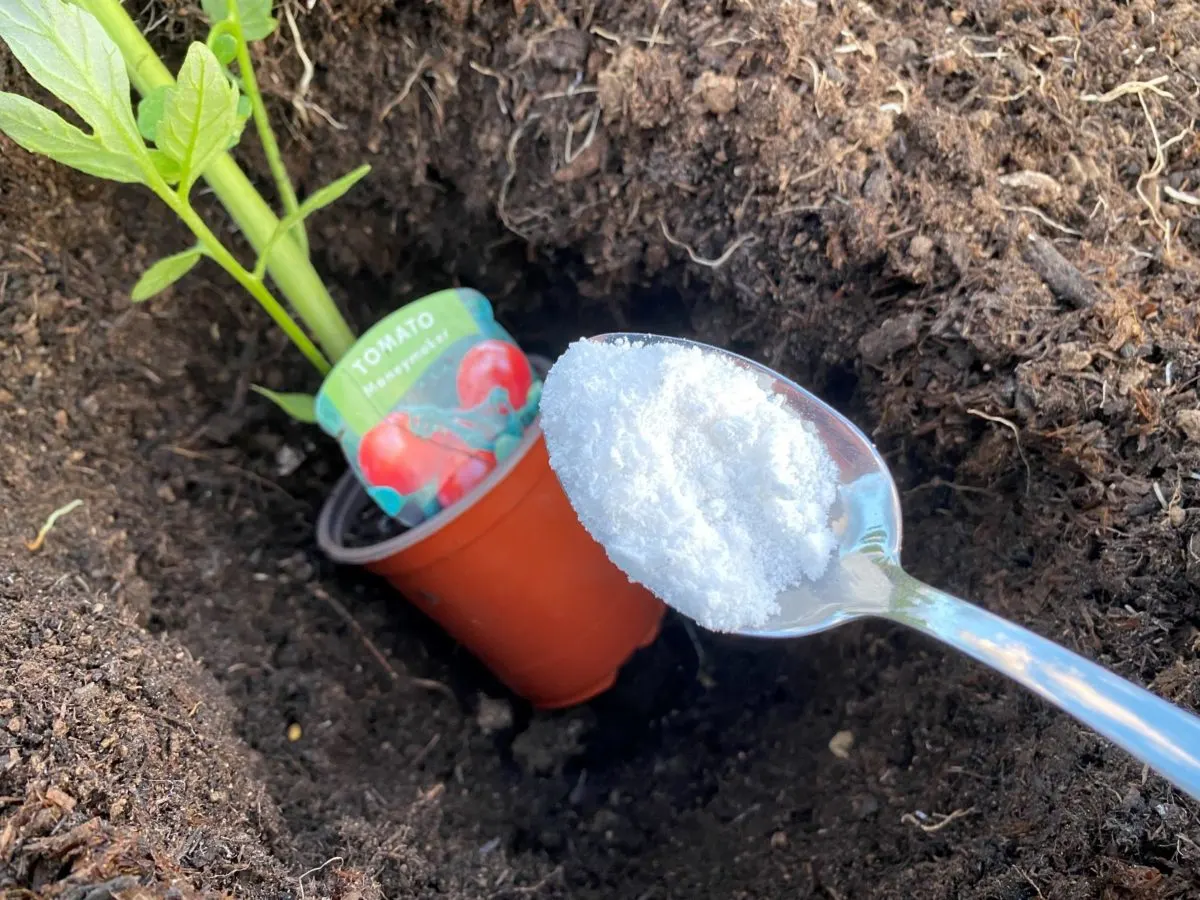
1. Fix yellowing leaves
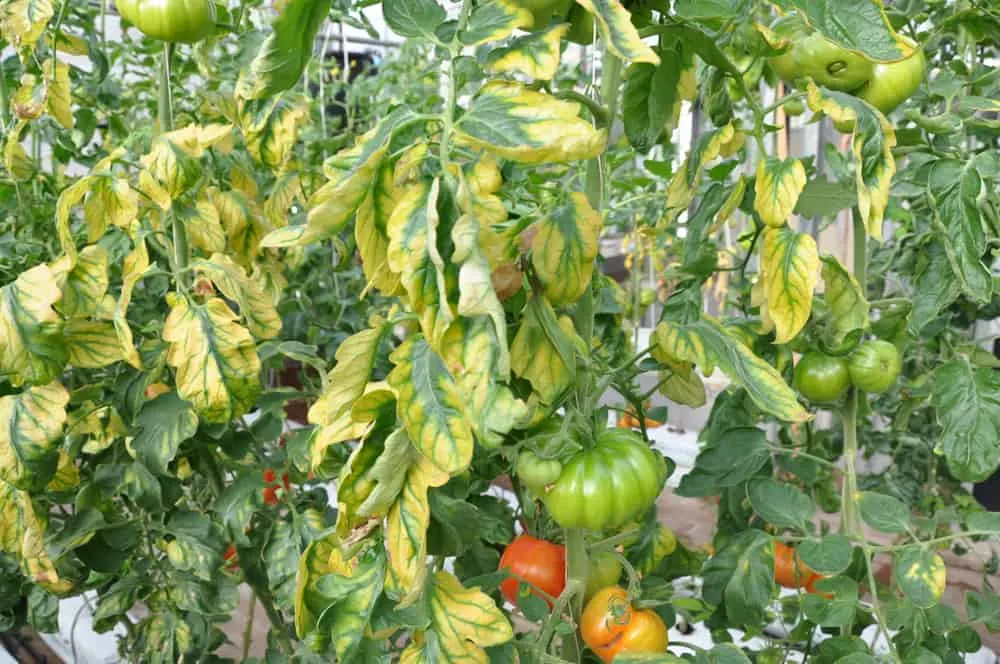
The sight of yellow leaves can be stressful for a tomato gardener. There are multiple reasons for yellowing leaves on tomato plants – incorrect watering, fungal disease, pest problems – that can either be easy fixes or signal the imminent demise of your plant.
One of these problems with an easy fix (if you have some Epsom salt on hand) is magnesium deficiency.
The most common sign of a magnesium deficiency in tomato plants is yellowing leaves with distinctive green veins. This condition – known as chlorosis – occurs when the plant does not produce enough chlorophyll.
Magnesium is an integral part of chlorophyll production. Magnesium deficiency for extended periods thus results in the yellowing of the leaves.
As magnesium is a main component in Epsom salt, its application can quickly combat magnesium deficiency and return your plant to good health.
Apply as a foliar spray by mixing one tablespoon in a gallon of water and misting the leaves. Avoid spraying in sunny weather to prevent damage or before rain to ensure the leaves have time to absorb the mixture.
2. Improve flavor
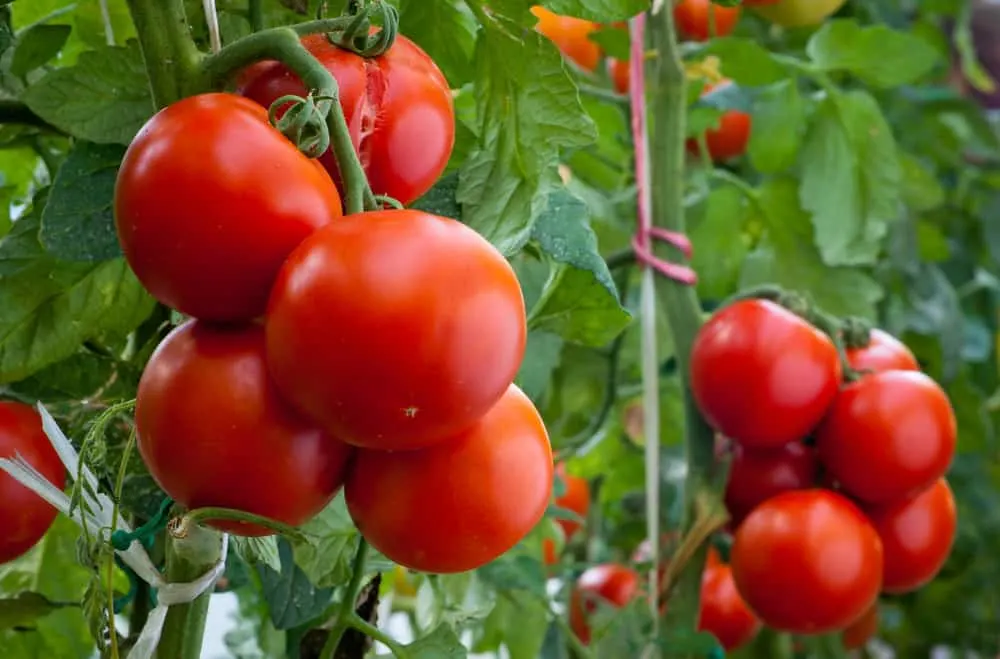
When growing tomato plants, you can’t ignore the importance of flavor. No one wants to harvest a pile of tomatoes that are bland – you can buy those in the grocery store!
One of the several ways you can improve the flavor of your tomatoes is Epsom salt application.
Magnesium and sulfur are both important plant micronutrients. Magnesium plays a core role in photosynthesis, while sulfur aids in the production of enzymes and proteins. Although they are only needed in small amounts, they make a big difference to the health of your plants.
A solid supply and balance of all micronutrients – including magnesium and sulfur – are essential to plant health, which in turn makes your tomatoes tastier.
The addition of a small amount of Epsom salt in your watering can before watering will make those essential micronutrients available to the plant, improving the flavor of the fruits come harvest time.
3. Improve nutrient uptake
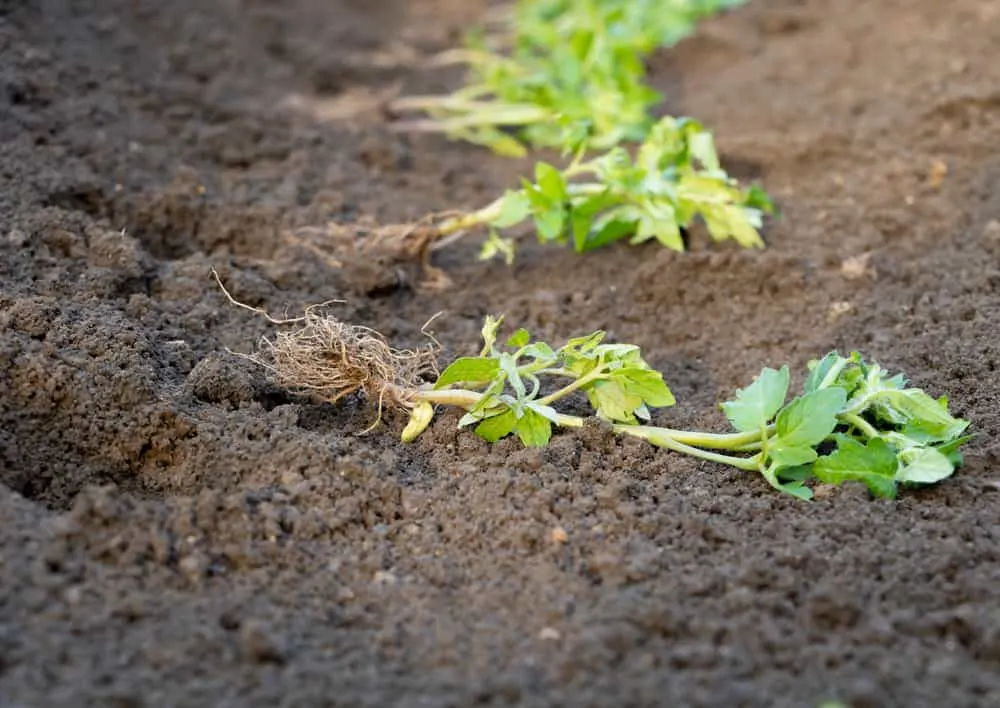
Magnesium and sulfur are needed in such small amounts, but a lack of these micronutrients can stress the plant, limiting the uptake of other vital nutrients like nitrogen and phosphorus.
Nitrogen is essential to healthy plant growth and phosphorus aids in flower and fruit production. Without these elements, you may have an unsuccessful harvest, no harvest at all, or dying tomato plants before they can even begin to fruit.
Research shows the application of Epsom salt in micronutrient deficient soil can improve uptake and use of these other important nutrients, improving the overall health of your plants. Apply the salt to deficient soil before planting or dilute in water and add when deficiency is evident.
4. Improve growth
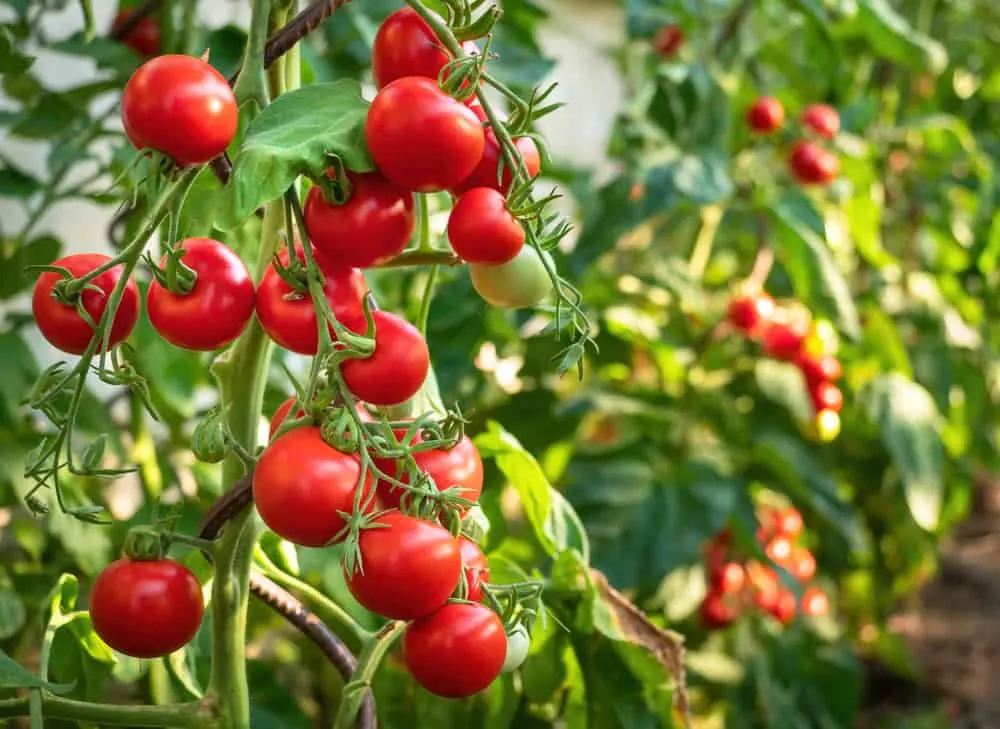
Again, it’s all about the micronutrients. When your tomato plants are provided with everything they need, they will grow as intended, producing all the tomatoes you could wish for. When they lack certain nutrients, the plant cannot grow correctly and will encounter several problems.
This is especially true for magnesium. Without it, the plants cannot photosynthesize, leaving them without fuel for growth. Even in perfect lighting conditions, a plant with less chlorophyll will not be able to process the extra sunlight and turn it into chemical energy.
Use Epsom salts to restore the micronutrient levels in the soil, and your tomato plants will grow taller and produce more fruit – every tomato gardener’s ultimate goal.
The caveat
Each of these four wonderful benefits comes with a caveat key to the success of your Epsom salt usage – the soil must be deficient in magnesium. These benefits can only occur when your tomato plants are magnesium deficient, and you use Epsom salts to restore the magnesium levels.
Extra application of magnesium when it is not needed, or over and above the amounts that the plant needs if it is deficient, will actually harm the plant more than it will help.
Research shows excessive Epsom salt can cause root problems, result in accumulation of magnesium in the soil causing a micronutrient imbalance, or spread to other parts of the environment, potentially becoming a pollutant.
A soil test is essential before any use of Epsom salts in the garden. If you’re unsure of a potential magnesium deficiency and can’t test the soil, the use of a general fertilizer in limited amounts is considered safer and more likely to resolve the problem than Epsom salt application.
That being said, while these benefits do have a basis in reality when a magnesium deficiency is present, there are some claims that remain firmly in the realm of fiction.
What Epsom Salt Can’t Do For Tomato Plants
1. Prevent Blossom End Rot
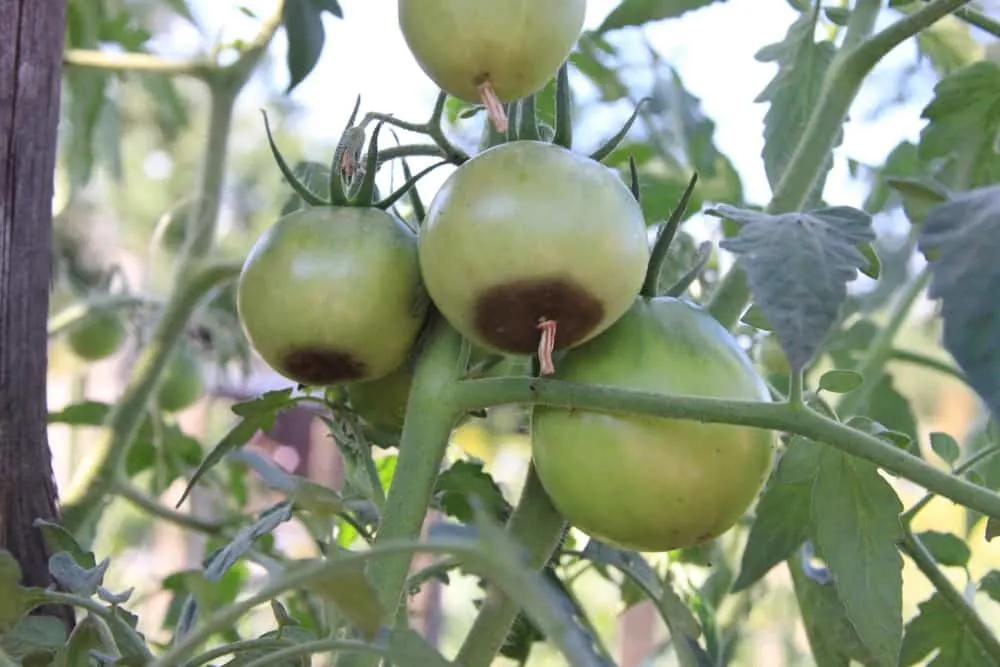
Blossom end rot is a condition that affects the fruits of tomatoes. When the plant cannot take up enough calcium, it becomes deficient, resulting in the common rotting of parts of the fruit that plagues tomato gardeners. Gardeners will try anything to resolve the problem – including Epsom salt.
Unfortunately, problems with blossom end rot have nothing to do with magnesium. In fact, it usually has nothing to do with the soil. The most common cause of blossom end rot is incorrect watering, preventing adequate uptake of calcium. Plants can still get blossom end rot in soil abundant in calcium, or magnesium for that matter.
To make matters worse, the application of Epsom salt to plants afflicted by blossom end rot can actually make the problem more severe. If the plant takes up excess magnesium, it competes with the calcium and results in even less calcium absorption.
When you are frantically trying to fix a problem with your tomatoes, that is the last thing you want – rather avoid it altogether.
2. Deter pests
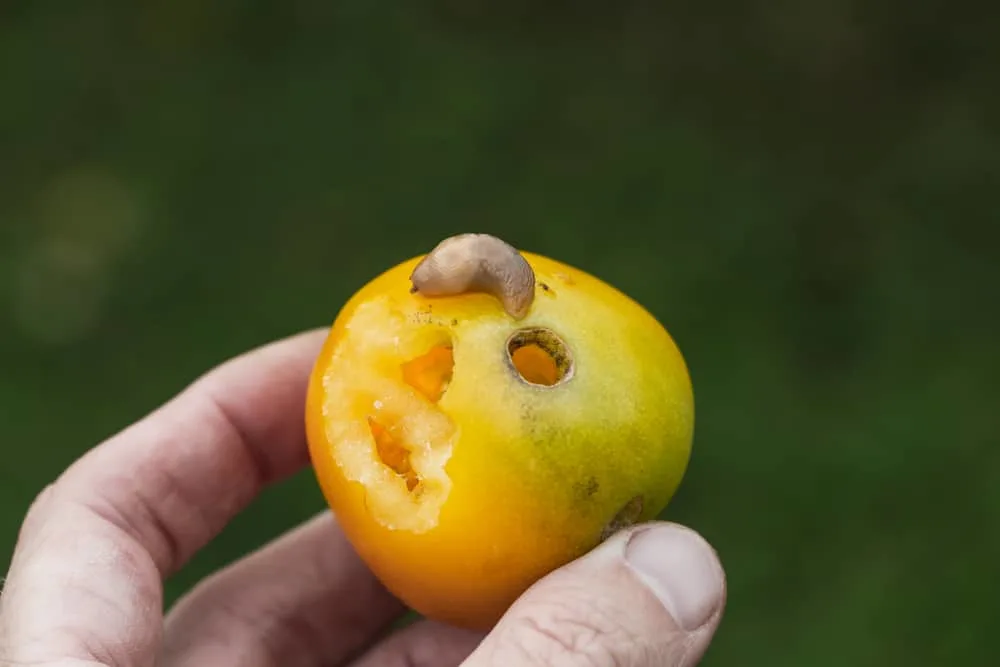
There are hundreds of natural pest control methods on the internet. Each one is labeled ‘guaranteed’ to resolve your problem in an instant. Some of the claims may work, and some have absolutely no evidence to back them up. Epsom salt is the latter.
Research into the efficacy of Epsom salt as a pest repellant for caterpillars, grasshoppers, flies, and a range of other tomato pests found no evidence to support the claim. The same applies to tomato plant diseases. If you’re looking for a solution to your pest problem, you’re better off using one of the approved methods.
3. Aid tomato seed germination
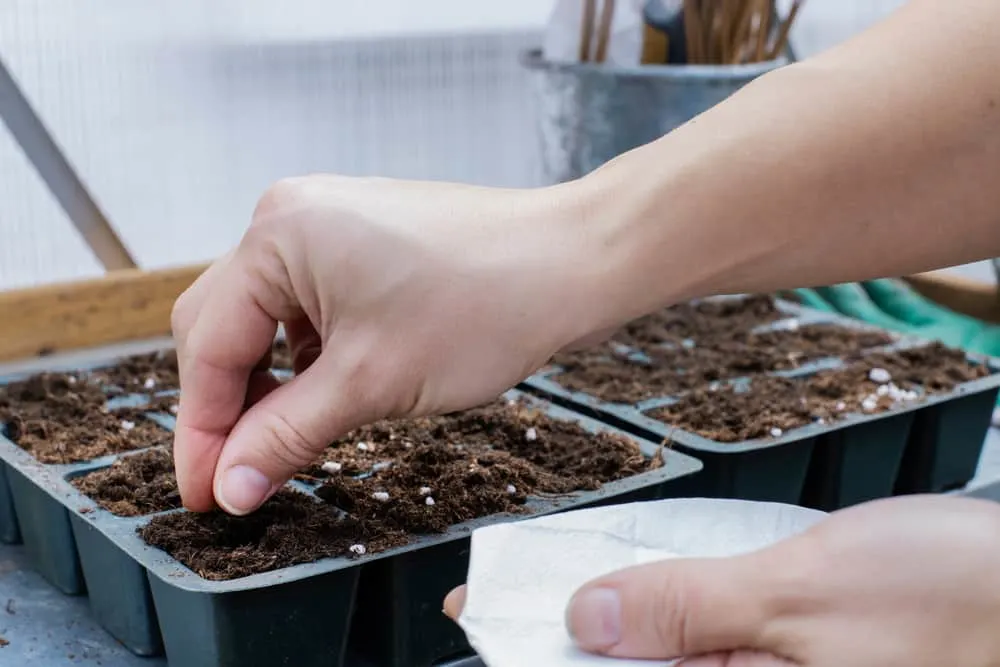
Tomato seeds are magical things. They are like little pockets of nutrients that contain everything they need to sprout and get started. That means that any application of additional micronutrients will be, in a word, useless – including added magnesium from Epsom salts.
When transplanting a seedling into magnesium-deficient soil, adding some Epsom salt in the planting hole may resolve the soil deficiency. But when a seed is germinating, it needs no extra nutrient help from us gardeners to get going.
4. Feed plants adequately
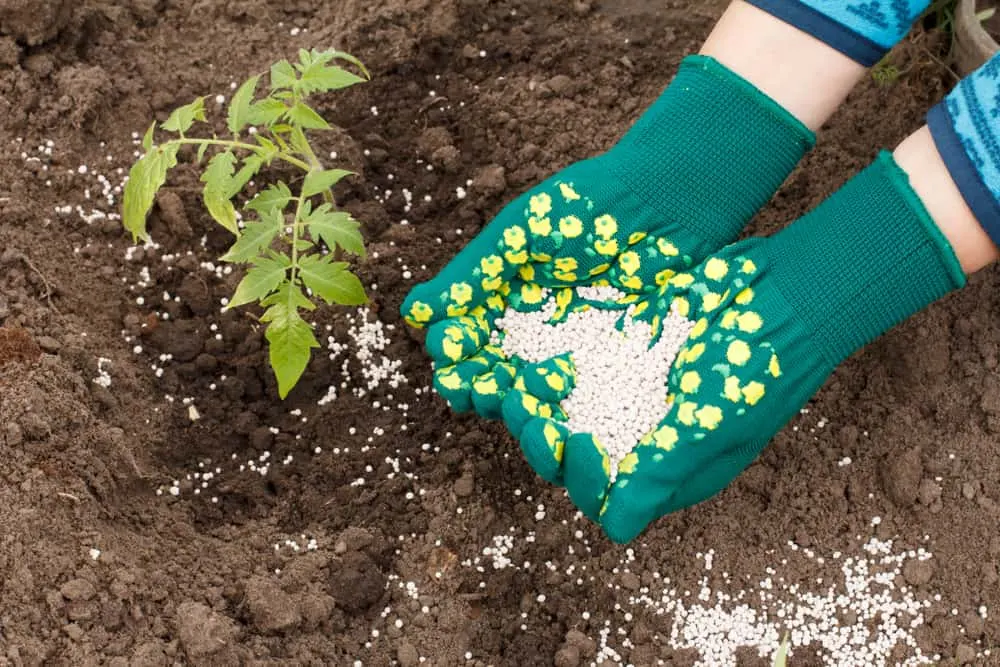
Epsom salt is often recommended as a tomato fertilizer due to its magnesium content. At first glance, that may sound like a great idea, but the suggestion overlooks two related factors.
Firstly, as mentioned previously, magnesium is a micronutrient. Tomato plants only need magnesium in very small amounts – much smaller than a dose of Epsom salt will provide.
Secondly, the purpose of fertilizer is to provide the plant with a range of nutrients needed for growth, or core nutrients (nitrogen, phosphorus, or potassium) for a specific purpose, such as fruiting.
Magnesium and sulfur alone will not provide your tomato plants with enough nutrients to be used as a complete fertilizer. You can add small amounts of Epsom salt to your fertilizer if your tomato plants are magnesium deficient. But most general fertilizers contain everything the plant will need to grow effectively.
Epsom salt may be touted as an easily accessible, cheap remedy for all your tomato plant woes. While some of the claims are absolutely true (provided your plant or soil is magnesium deficient), others will not produce the results you are hoping for, and may end up hurting your precious tomato plants in the long run.
